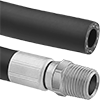Filter by
Capacity
For Use With
Diameter
Lid Material
Maximum Temperature
Clarity
Maximum Pressure
Depth
DFARS Specialty Metals
Drum Style
Drain Connection
Tank Orientation
Mounting Position
Containers, Storage, and Furniture
Fluid Handling
Material Handling






































